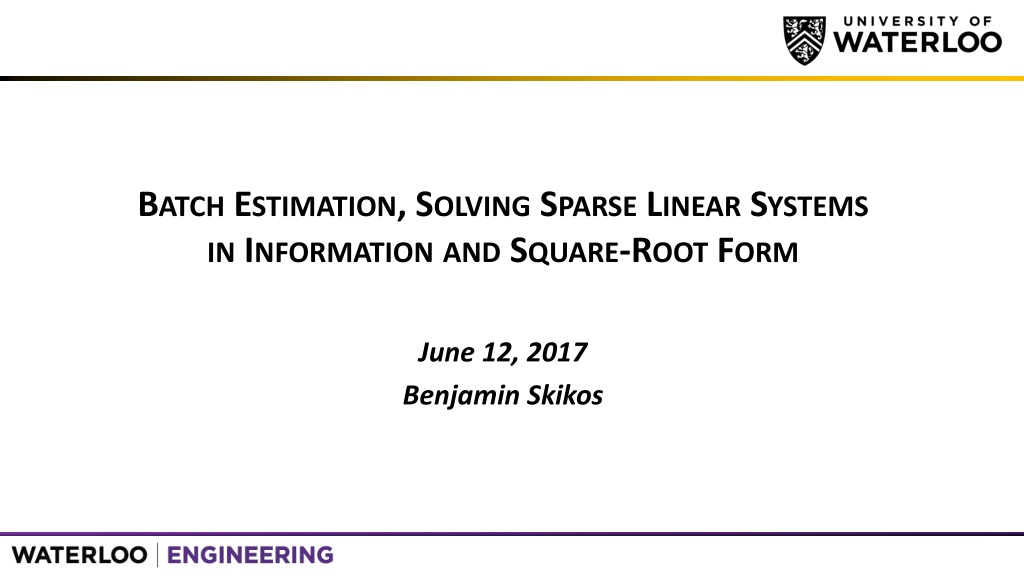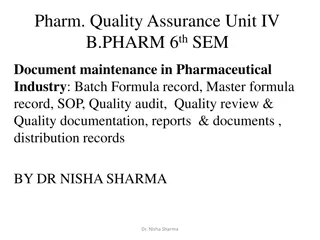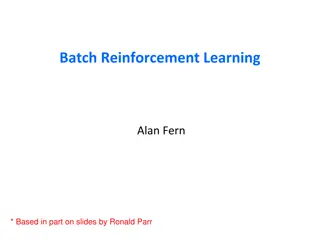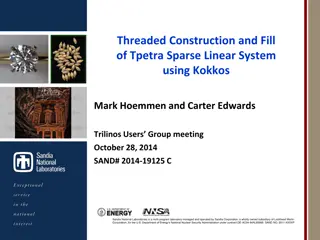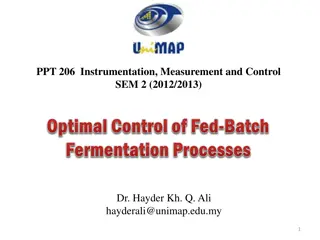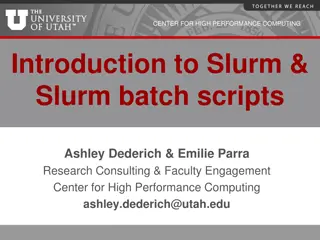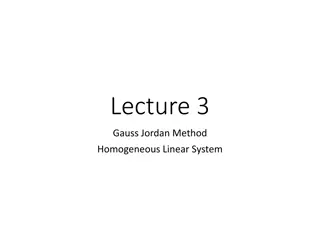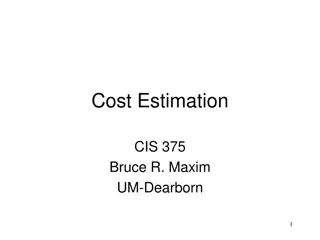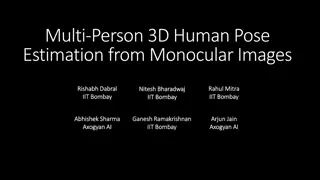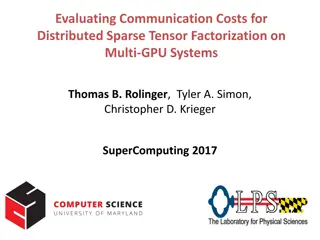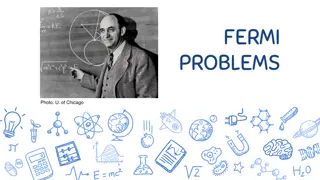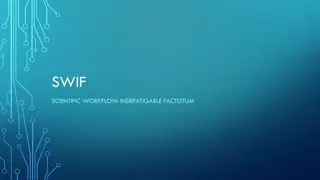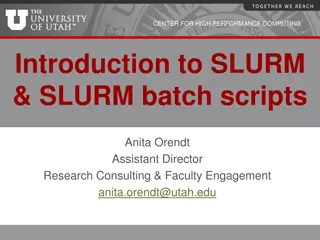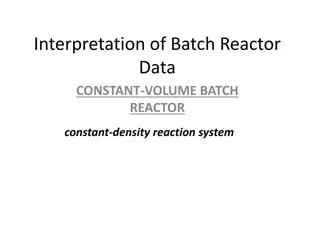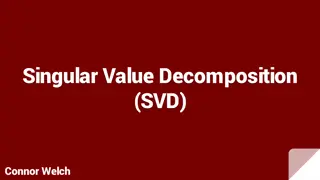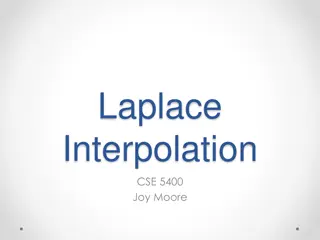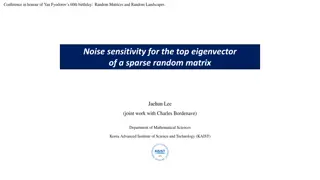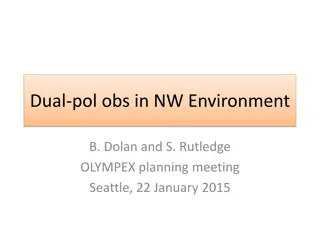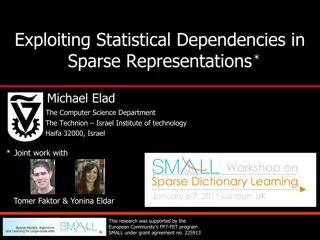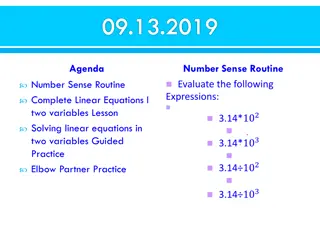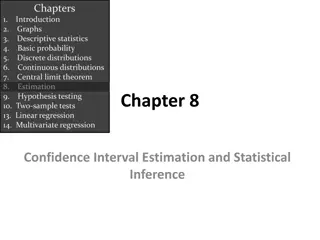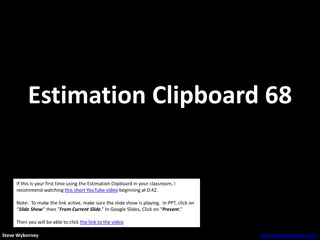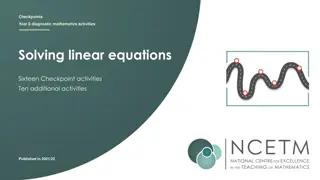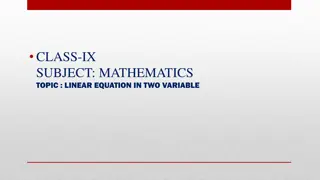Understanding Batch Estimation and Solving Sparse Linear Systems
Explore the concepts of batch estimation, solving sparse linear systems, and Square Root Filters in the context of information and square-root form. Learn about extended information filters, information filter motion updates, measurement updates, factor graph optimization, and more. Understand how Square Root Filters are historically motivated by limited computer precision and how smoothing techniques can estimate a robot's trajectory and surroundings in SLAM problems.
- Batch Estimation
- Sparse Linear Systems
- Square Root Filters
- Information Form
- Factor Graph Optimization
Download Presentation

Please find below an Image/Link to download the presentation.
The content on the website is provided AS IS for your information and personal use only. It may not be sold, licensed, or shared on other websites without obtaining consent from the author. Download presentation by click this link. If you encounter any issues during the download, it is possible that the publisher has removed the file from their server.
E N D
Presentation Transcript
BATCH ESTIMATION, SOLVING SPARSE LINEAR SYSTEMS IN INFORMATION AND SQUARE-ROOT FORM June 12, 2017 Benjamin Skikos
OUTLINE Information & Square Root Filters Square Root SAM Batch Approach Variable ordering and structure of SLAM Incremental Approach 1 Bayes Tree Incremental Approach 2
EXTENDED INFORMATION FILTER EKF represents posterior as mean and covariance EIF represents posterior as information matrix and information vector
INFORMATION FILTER MOTION UPDATE From the EKF
SQUARE ROOT FILTER Historically motivated by limited computer precision Factorize either covariance or information and rederive propagation and update equations Condition number is halved ? = ???
SMOOTHING In this context smoothing will be the full SLAM problem ; estimate the robot s trajectory and surroundings given all available measurements. For factor graphs, that means optimize over all the unknown states Recall, factors encode the joint probability over all unknowns
FACTOR GRAPH OPTIMIZATION Recall, to solve a factor graph it is converted to LLS. From here on out it is all about crunching matrices A is the stack of all factor Jacobians (Measurement Jacobian) B is the stack of all measurement/process model error
INFORMATION FORM - SAM The solution is found by solving the normal equations ATA is the information matrix or Hessian Efficiently solved by factorization Batch problem now solved
EX: CHOLESKY FACTORIZATION In this variant, R is an upper triangular matrix The sparseness of R and I affects how long the factorization takes Worst case fully dense: n3/3 The sparseness of R changes with variable ordering in the information matrix
MATRIX STRUCTURE A corresponds to the factor graph I corresponds to the adjacency matrix of the Markov Random Field. Each square root factor is associated with a triangulated (or chordal) graph whose elimination corresponds with the Bayes Net
MARKOV RANDOM FIELD Undirected graph with Markov properties: Pairwise: Any two non-adjacent variables are conditionally independent given all other variables Local Markov: A variable is conditionally independent of all other variables given its neighbors Global Markov: Any two subsets of variables are conditionally independent given a separating subset https://en.wikipedia.org/wiki/Markov_random_field
FACTOR GRAPH TO MARKOV RANDOM FIELD Factors are abstracted out MRF edges represent dependencies between random variables Like factor graphs, encode joint probability
MRF TO BAYES NET Additional Conditionals
VARIABLE ORDERING ColAMD Elimination Ordering MRF Landmarks, Then Poses Finding the optimal ordering is NP-Complete Fewer edges means faster back-substitution
ONLINE SAM Most new measurements only directly affect a small subset of the state vector Need a way to add state elements incrementally without redoing work
INCREMENTAL APPROACH - ISAM Consider the QR factorization of A substituted for A
JACOBIAN UPDATE ? =? ?? Incrementally updating R is just more Givens rotations
UNCERTAINTYAND DATA ASSOCIATION Uncertainty of the state is required to perform certain common tasks In order to match measurements to landmarks, maximum likelihood can be used: This requires computing the Mahalanobis distance between measured position and each landmark Need covariance on state estimate
MARGINAL COVARIANCE The covariance of a subset of state variables may be all that is required
MARGINAL RECOVERY Assuming the marginal of interest includes the rightmost variables Last Column of Y
DIAGONAL ENTRIES Can recover full covariance matrix Back-substitutions
CLIQUES The cliques of a graph are subsets of fully connected vertices
CLIQUE TREE The square root factor is associated with a chordal graph
BAYES NET AGAIN Recall the Bayes Net
BAYES TREE A factorization of the Bayes Net Encodes factored probability density Cliques discovered via Maximum Cardinality Search X2, X3 L1,X1 : X2 L2 : X3
INCREMENTAL APPROACH - ISAM2 Bayes Tree representation can be updated incrementally
VARIABLE ORDERING During the increment, the elimination of the intermediate factor graph can be reordered
NON-LINEAR FACTORSAND PARTIAL UPDATES When incorporating non-linear factors, a Taylor expansion is typically used The process of updating Jacobians at new linearization points costs time Only update Jacobians if needed Similarly, defer updating states that don t change much
COMPLEXITY Worst case is O(n^3) for general matrix factorization Planar mapping with restricted sensor range is O(n^1.5) Incremental methods can often do better most of the time
BUT WHAT ABOUT HARD DEADLINES? Worst-case runtime is grows as the number of variables increase If constant time is required, need another solution
REFERENCES Course References: K. Wu, A. Ahmed, G. A. Georgiou, and S. I. Roumeliotis, A square root inverse filter for efficient vision-aided inertial navigation on mobile devices., in Robotics: Science and Systems, 2015. M. Kaess, A. Ranganathan, and F. Dellaert, isam: Incremental smoothing and mapping, IEEE Transactions on Robotics, vol. 24, no. 6, pp. 1365 1378, 2008. M. Kaess, H. Johannsson, R. Roberts, V. Ila, J. J. Leonard, and F. Dellaert, isam2: Incremental smoothing and mapping using the bayes tree, The International Journal of Robotics Research, vol. 31, no. 2, pp. 216 235, 2012. Additional References: J. Lambers, The QR Factorization Lecture Notes. Retrieved from http://www.math.usm.edu/lambers/mat610/sum10/lecture9.pdf S. Thrun, Y. Liu, D. Koller, A. Ng, Z. Ghahramani, H. Durrant-Whyte. SEIF . Retrieved from http://robots.stanford.edu/papers/thrun.seif.pdf F. Dellaert, M, Kaess. Square Root SAM: Simultaneous Localization and Mapping via Square Root Information Smoothing in The International Journal of Robotics Research, vol. 25, no. 12, pp. 1181-1203, 2006 M. Salzmann, Some Aspects of Kalman Filtering University of New Brunswick, August 1988 All pictures taken from these sources and wikipedia
